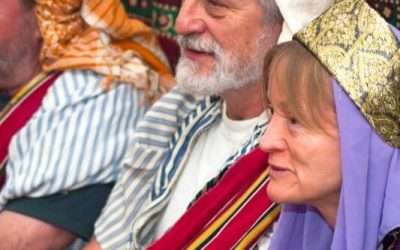Reaching out to unreached people groups (UPGs) with the message of hope and love is a crucial aspect of global missions. However, due to limited resources and countless UPGs scattered across the world, prioritizing efforts can be a daunting task. The Unreached People Groups Priority Matrix has emerged as an invaluable tool to address this challenge. This blog post explores the significance of the matrix and how it empowers diaspora missions in North America.
The Unreached People Groups Priority Matrix is a comprehensive framework developed to guide mission organizations, churches, and individuals in making informed decisions about where to allocate their resources and efforts. By assigning a priority score to each people group community in a specific city, the matrix helps identify the most strategic areas for engagement and investment.
The matrix takes into account factors such as the Global Status of Evangelical Christianity, population size in the city, same-culture churches started in the city, existing ministry engagement, same-culture Christians in the city, and global significance of the people group in the city. These factors provide a holistic view of the situation, enabling organizations to prioritize UPGs with the most significant potential for long-term transformation.
It’s important to note that the UPG Priority Matrix focuses on the unreached in the diaspora, meaning it considers language and religious groups rather than individual people groups. The goal is to strategically identify the largest unreached people groups through which the Gospel can naturally spread as a church-planting movement without encountering significant barriers of understanding or acceptance.
Data-driven decision-making is at the core of the UPG Priority Matrix. By analyzing various factors, mission organizations can engage in strategic thinking and planning. This approach ensures that efforts are intentional and targeted, maximizing the potential for transformation among UPGs.
Frequently Asked Questions:
- Why prioritize unreached people groups?
Prioritizing unreached people groups aligns with the biblical mandate to reach all nations with the Gospel. It ensures that resources are allocated strategically to maximize impact and transformation.
- How do you determine the population in city estimates?
People group estimates are challenging to obtain, but the matrix uses multiple sources to provide the most accurate estimate possible. Census tables, which include data on people’s ancestry, country of birth, and language spoken at home, serve as a good foundation for comparing people group populations in various cities. However, it’s essential to acknowledge that census figures may undercount certain groups, such as those distrustful of government entities or consisting of undocumented immigrants.
- Are all unreached people groups the same?
No, unreached people groups are diverse in terms of culture, language, and geography. Each group requires a customized approach to engage with their unique needs and challenges effectively.
- How can I get involved in reaching unreached people groups?
There are various ways to get involved, including supporting missionary organizations, praying for unreached people groups, raising awareness, and participating in short-term mission trips. No matter how small, each contribution makes a difference in reaching the unreached.
In conclusion, understanding unreached people groups and their significance is crucial in fulfilling the Great Commission. The Unreached People Groups Priority Matrix is a valuable tool for prioritizing efforts and maximizing impact. Let us embrace the call to reach the unreached and ensure that the message of hope reaches every unreached people group God has brought to North America. Together, we can make a difference.




